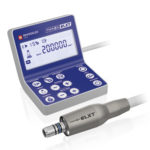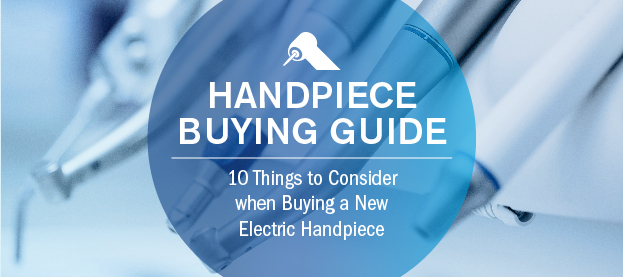So you’ve heard great things about electric handpieces and are thinking of making a purchase.
Before jumping into the world of electrics, there are some important things to consider. For instance, it’s important to keep in mind there is a small learning curve when using electric handpieces for the first time. These are the top 10 things to take into consideration as you make your decision.
 1. Test Drive
1. Test Drive
Before making an investment in electric handpieces, it is important to try one to make sure it is the right fit for you. A popular place to evaluate multiple handpieces under one roof is a dental convention. However, a 30-second evaluation may not allow you to fully recognize the advantages of electric handpieces. Using one in your operatory for 1-2 days is the best way to fully evaluate an electric handpiece, so take advantage of demo programs from handpiece companies, like Brasseler.
 2. Learning Curve
2. Learning Curve
It’s important to keep in mind there is a small learning curve when using electric handpieces for the first time. Unlike an air handpiece, which can stall out when too much pressure is applied, electric handpieces provide consistent speed. Due to this constant speed, you would utilize a “milling” motion with an electric handpiece versus the “feathering” or paintbrush motion of an air handpiece. After a few procedures, you’ll get the hang of it!
 3. Modern Materials
3. Modern Materials
What are you currently using to remove, prep, finish and polish Zirconia or Lithium Disilicate modern materials? One often-overlooked advantage of electric handpieces is the ability to operate at consistent, low speeds with high torque. Consider adding a low speed attachment to your electric package in addition to the high speed attachment.
 4. Weight
4. Weight
Keep in mind that electric handpieces weigh more than the air handpieces. Advancements over the last few years have reduced the motor weight by as much as 50%, so consider lightweight motor options available in the market today. After all, lifting weights should be limited to the gym and not your dental operatory.
5. Head Size
With air handpieces, large head sizes typically result in higher torque output but that isn’t the case with electrics. The larger head size doesn’t translate into more power, so you don’t have to compromise access with electric handpieces. When looking at the overall head size, you should consider not only the head height but the diameter as well. Compare different head sizes on the market and find the head size that meets your needs.
 6. Mounting Options
6. Mounting Options
A complete electric set-up includes the motor, attachments, and control panel. The location and type of control panel mount is something you should take into consideration. The most common option, especially for those that have an existing chair, is to have the control box mounted externally. This is generally the most economical option and allows it to be easily removed in the future for repairs or replacement upgrades. The preferred option when purchasing a new chair is to have the control unit integrated into your delivery unit for a seamless look.
 7. Future Repair Costs
7. Future Repair Costs
Repairs for electric handpiece attachment are generally more expensive than air handpieces. The most common repair for high speed air handpieces involves replacing the turbine, but electric attachment repairs typically involve replacing the cartridge, drive shaft, and clutch assemblies. Find out what the standard repair cost would be when the warranty expires and factor this into your decision.
 8. Warranty
8. Warranty
How long is the warranty on the electric system you are considering? What is the warranty on the motor and control unit? What about the individual electric attachments? Longer warranties may not necessarily reflect the overall durability of the product, but they certainly can provide you with repair cost protection during the first few years of ownership.
 9. Maintenance
9. Maintenance
With repair costs higher than traditional high speed air handpieces, make certain your investment is protected. Consider an automated maintenance system that will lubricate and purge your new handpieces. Using a manual spray may not provide the consistent and proper handpiece maintenance of an automated system.
 10. Budget
10. Budget
We couldn’t complete this list without mentioning your budget. Are you going to convert just one operatory or multiple operatories? How many attachments will you need? We generally recommend 3 highspeeds and 2 lowspeeds per operatory. An attachment can range from $600 to $1,600 each, while the control unit with motor can range from $2,000 to $4,000 each depending on the model. Also don’t forget to talk with your tax advisor about potential tax deductions for equipment purchases known as Section179.
Sounds good and you are ready to view all your options?
Great! Hop on over to https://shop.brasselerusa.com/Catalog/Handpieces/Clinical-Electric where you can view our entire line of electric products. If you have any additional questions or need some additional guidance, our support team would be more than happy to assist! Simply give us a call at 800-841-4522 or shoot us an email to CustomerService@BrasselerUSA.


